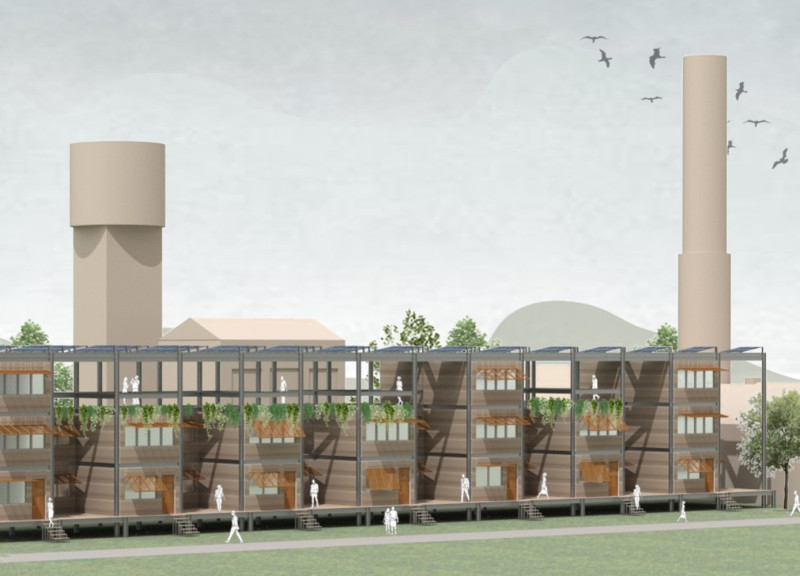5 key facts about this project
Unique Modular Design Features
Distinctive to the "Scaffale" project is its modular design approach, which allows flexibility in unit configurations. Each housing module can be customized to meet the needs of individual families or groups, providing options for one to three-bedroom layouts. The vertical stacking of these modules creates diverse and dynamic facade expressions while maximizing land use efficiency. The architectural design also promotes natural light and ventilation with strategically positioned windows and open-air corridors, enhancing the livability of the units.
Sustainability plays a critical role in the project. Recycled steel forms the structural framework, providing a durable and eco-friendly base. Locally sourced timber is incorporated into the design to minimize the environmental impact and achieve a balance between modern aesthetics and natural materials. Energy-efficient insulated panels contribute to the thermal performance of the building, while green roof systems encourage biodiversity and support urban greening initiatives. These sustainable design elements collectively reduce energy dependency and improve the overall environmental footprint of the project.
Community-Centric Spaces
The design integrates communal areas on the ground floor, serving as shared spaces for residents. These areas are intended to foster social interaction and promote community wellbeing, featuring gardens and recreational spaces that encourage outdoor engagement. By designing these communal environments, "Scaffale" seeks to bridge the gap between private living spaces and shared experiences, cultivating a cohesive residential community.
Overall, the "Scaffale" project stands out due to its comprehensive approach to affordable housing, emphasizing adaptability, sustainability, and social interaction. This initiative provides a model for modern urban living that can be replicated in various contexts. For further details, including architectural plans, architectural sections, and specific architectural designs, readers are encouraged to explore the complete project presentation for a deeper understanding of the design and its implications.























